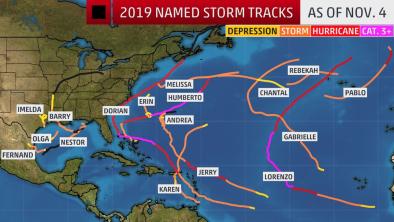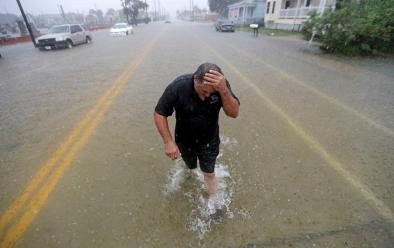Science Source
Rapid attribution of the extreme rainfall in Texas from Tropical Storm Imelda
Rapid analysis concludes that the extreme rainfall and flooding caused by Tropical Storm Imelda was made more likely and intense due to global warming.
In mid-September 2019, torrential rainfall from Tropical Storm Imelda caused large-scale flooding in Southeast Texas. Authorities have linked five deaths to the floods and over one thousand people had to be rescued, making this the worst storm in the area since Hurricane Harvey.
Key findings:
- The precipitation recorded on 19–20 September 2019 associated with Tropical Storm Imelda was extreme, expected only approx. every 1200 yr at the station with the highest total amount of rainfall. Return times at other stations between East Houston and Beaumont were almost as high. The chances of recording this much precipitation at any of 85 stations along the Gulf Coast is however much higher, at about 1 in 50 years.
- Two standard statistical analyses of the observations show that the probability for such an amount of rain has increased by a factor 2.6 (1.6 to 5.0) since 1900, or equivalently the amount of rainfall in such an event has increased by 18% (11% to 28%) since 1900.
- Taking high-resolution climate models into account, we conclude that two-day extreme precipitation events along the Gulf Coast as intense as observed on 19–20 September 2019 or higher have become 1.6 to 2.6 times more likely due to anthropogenic climate change, or 9% to 17% more intense.
- This study highlights that climate change has clearly led to increased precipitation during extreme events in southeast Texas. Coupled with sea level rise, climate change has resulted in more frequent and intense flooding, especially in coastal areas. This needs to be seen in the context of rapid urban expansion in the area and is characterized by a loss in impervious cover. In part this expansion is driven by population growth. It has resulted in an increase in the number of people and value of property at risk to flooding. An estimated 6.6 million people live in the counties impacted by Imelda.
Related Content
Headline

Nov 6, 2019 | Weather Underground
As 2019's Hurricane Season Winds Down, Here Are 7 of the Craziest Things We Saw
Headline

Oct 28, 2019 | Washington Post
Oddball Hurricane Pablo developed farther east than any Atlantic tropical cyclone on record
Headline

Oct 22, 2019 | The Weather Channel
Atlantic Hurricane Scorecard: After Nestor, Here's How the 2019 Season Measures Up
Headline

Oct 2, 2019 | Washington Post
Climate change more than doubled the odds of Houston’s most recent deluge, study finds


